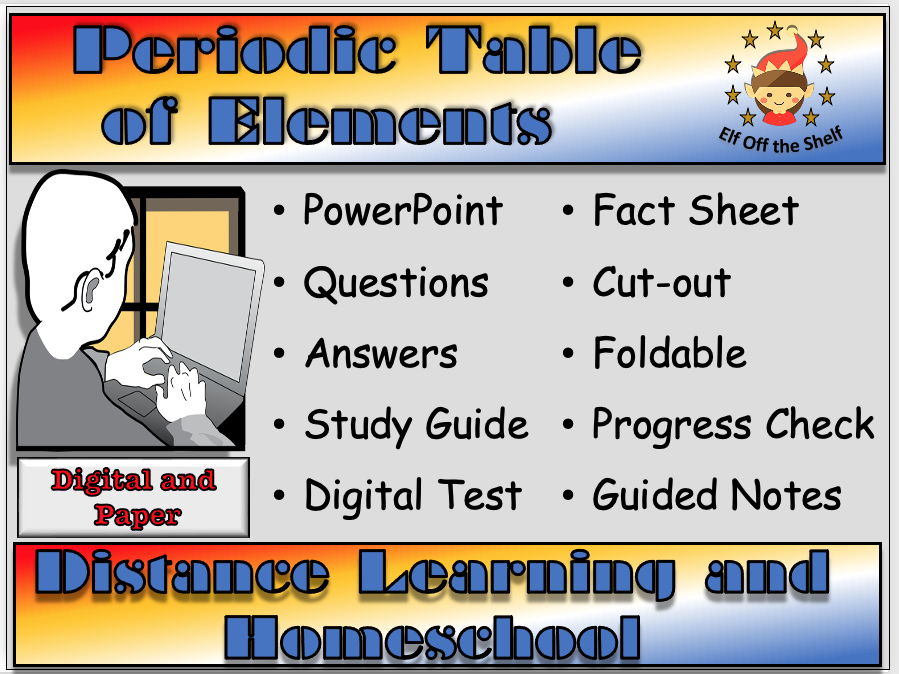











The structure patterns and trends of the periodic table of elements and the names and properties of the alkali metals (groups1), halogens (group 7) and the rare or noble gases (group 0) are all explained in this action-packed and enjoyable fully resourced distance learning or home school lesson for middle school science.
This resource has been designed so that the animated PowerPoint replaces the teacher by providing structure, sequence, knowledge and answers. The worksheets, cut-outs, foldable and progress check provide a familiar medium for students to develop and test their knowledge, continue to develop their literacy skills and use their creativity to organise their learning and assess their progress.
What’s Covered
- Elements are arranged in the periodic table in order of atomic number.
- Metals are on the left of the table and non – metals on the right with a zig – zag line dividing the two.
- Some of the metals touching the zig – zag are semi – metals or metalloids which means they have some properties of metals and of non – metals.
- Vertical columns are called groups and horizontal rows are called periods.
- Each period starts with metals on the left and end with non – metals on the right.
- The elements within each group have similar physical and chemical properties.
- Group 1 are the alkali metals. Group 2 are the alkaline earth metals. Group 7 are the halogens. Group 0 are the rare or noble gases. The central block are the transition metals.
- On the left – hand side of the table, reactivity increases as you go down a group and on the right – hand side of the table reactivity increases as you go up a group.
- Group 1: can be cut with a knife; must be stored under oil; low density – lithium, sodium and potassium float on water; form compounds which are solid at room temperature; form compounds with similar formulae – LiCl. NaCl. Group 7 are all colored, react with hydrogen to form acids and react with metals to form salts.
- Alkali metal + water --> alkali metal hydroxide + hydrogen
- lithium + water --> lithium hydroxide + hydrogen
- Group 0 are all inert gases – they do not react with other elements
- Transition metals; except for mercury, which is a liquid, these are harder than group 1 metals; have high melting points; react slowly with atmospheric oxygen.
Something went wrong, please try again later.
This resource hasn't been reviewed yet
To ensure quality for our reviews, only customers who have purchased this resource can review it
to let us know if it violates our terms and conditions.
Our customer service team will review your report and will be in touch.